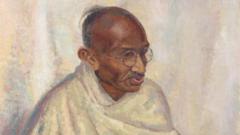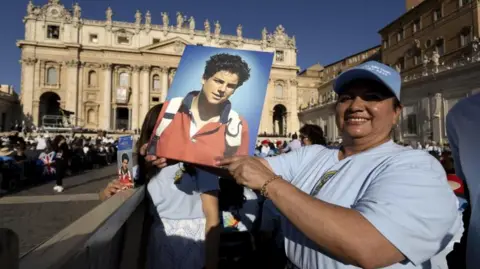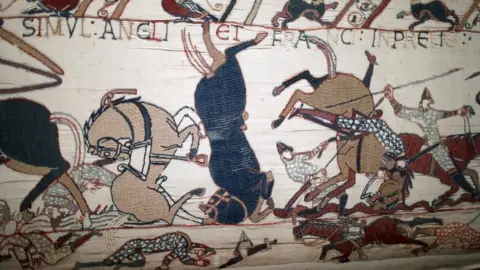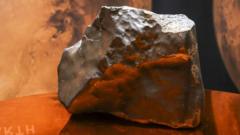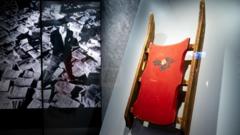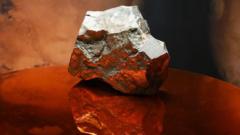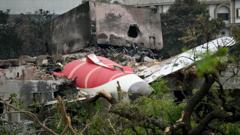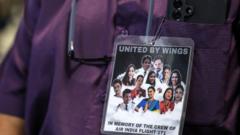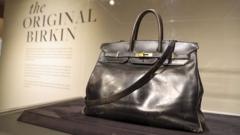The unique oil portrait of Mahatma Gandhi, created in 1931 by British artist Clare Leighton, is headed for auction at Bonhams in London next month. Gandhi, a pivotal figure in India's struggle for independence from British rule, is revered globally, particularly by Indians who honor him as the "father of the nation."
This portrait is particularly notable as it is believed to be the only oil painting for which Gandhi actively posed. The artwork was painted during his visit to London for the second Round Table Conference, a crucial event aimed at negotiating constitutional reforms and self-governance for India.
According to Bonhams, Leighton had the rare privilege of entering Gandhi's office and sketching him on numerous occasions, capturing his likeness in a manner that resonates with authenticity. "This painting represents unique historical and cultural significance. Its broader appreciation would be delightful, be it in India or elsewhere," commented Caspar Leighton, the artist's great-nephew.
Leighton’s introduction to Gandhi came through her partner, British journalist Henry Noel Brailsford, who was a staunch advocate of India's independence. In November 1931, Leighton held an exhibition at the Albany Galleries in London, showcasing her works, which included the oil portrait along with a charcoal sketch depicting Gandhi at rest. While Gandhi himself did not attend, various members from the Indian delegation were present, including notable independence leader Sarojini Naidu.
British journalist Winifred Holtby poignantly described the portrait, noting Gandhi’s characteristic posture, “bare-headed, in his blanket, one finger raised,” capturing both his image and essence as a leader. Following the exhibition, Gandhi’s secretary Mahadev Desai expressed positive sentiments regarding the painting’s likeness, affirming its impression on viewers.
Despite a lack of records indicating public display following its 1931 exhibition, the portrait resurfaced for an exhibition in Boston in 1978, belonging to Leighton’s estate after her passing in 1989. The portrait faced adversity in the 1970s when it was allegedly damaged in a knife attack, said to be executed by a right-wing Hindu activist. This incident reflects historical tensions, as Gandhi has faced criticism from some nationalist factions who viewed his policies as too accommodating towards Muslims, especially during the tumultuous period surrounding India's partition.
On January 30, 1948, Gandhi was assassinated by Nathuram Godse, a nationalist with ties to the radical right-wing groups. As the auction approaches, the painting stands not only as a relic of Gandhi's life but also as a representation of the complex narratives surrounding his legacy.
This portrait is particularly notable as it is believed to be the only oil painting for which Gandhi actively posed. The artwork was painted during his visit to London for the second Round Table Conference, a crucial event aimed at negotiating constitutional reforms and self-governance for India.
According to Bonhams, Leighton had the rare privilege of entering Gandhi's office and sketching him on numerous occasions, capturing his likeness in a manner that resonates with authenticity. "This painting represents unique historical and cultural significance. Its broader appreciation would be delightful, be it in India or elsewhere," commented Caspar Leighton, the artist's great-nephew.
Leighton’s introduction to Gandhi came through her partner, British journalist Henry Noel Brailsford, who was a staunch advocate of India's independence. In November 1931, Leighton held an exhibition at the Albany Galleries in London, showcasing her works, which included the oil portrait along with a charcoal sketch depicting Gandhi at rest. While Gandhi himself did not attend, various members from the Indian delegation were present, including notable independence leader Sarojini Naidu.
British journalist Winifred Holtby poignantly described the portrait, noting Gandhi’s characteristic posture, “bare-headed, in his blanket, one finger raised,” capturing both his image and essence as a leader. Following the exhibition, Gandhi’s secretary Mahadev Desai expressed positive sentiments regarding the painting’s likeness, affirming its impression on viewers.
Despite a lack of records indicating public display following its 1931 exhibition, the portrait resurfaced for an exhibition in Boston in 1978, belonging to Leighton’s estate after her passing in 1989. The portrait faced adversity in the 1970s when it was allegedly damaged in a knife attack, said to be executed by a right-wing Hindu activist. This incident reflects historical tensions, as Gandhi has faced criticism from some nationalist factions who viewed his policies as too accommodating towards Muslims, especially during the tumultuous period surrounding India's partition.
On January 30, 1948, Gandhi was assassinated by Nathuram Godse, a nationalist with ties to the radical right-wing groups. As the auction approaches, the painting stands not only as a relic of Gandhi's life but also as a representation of the complex narratives surrounding his legacy.

